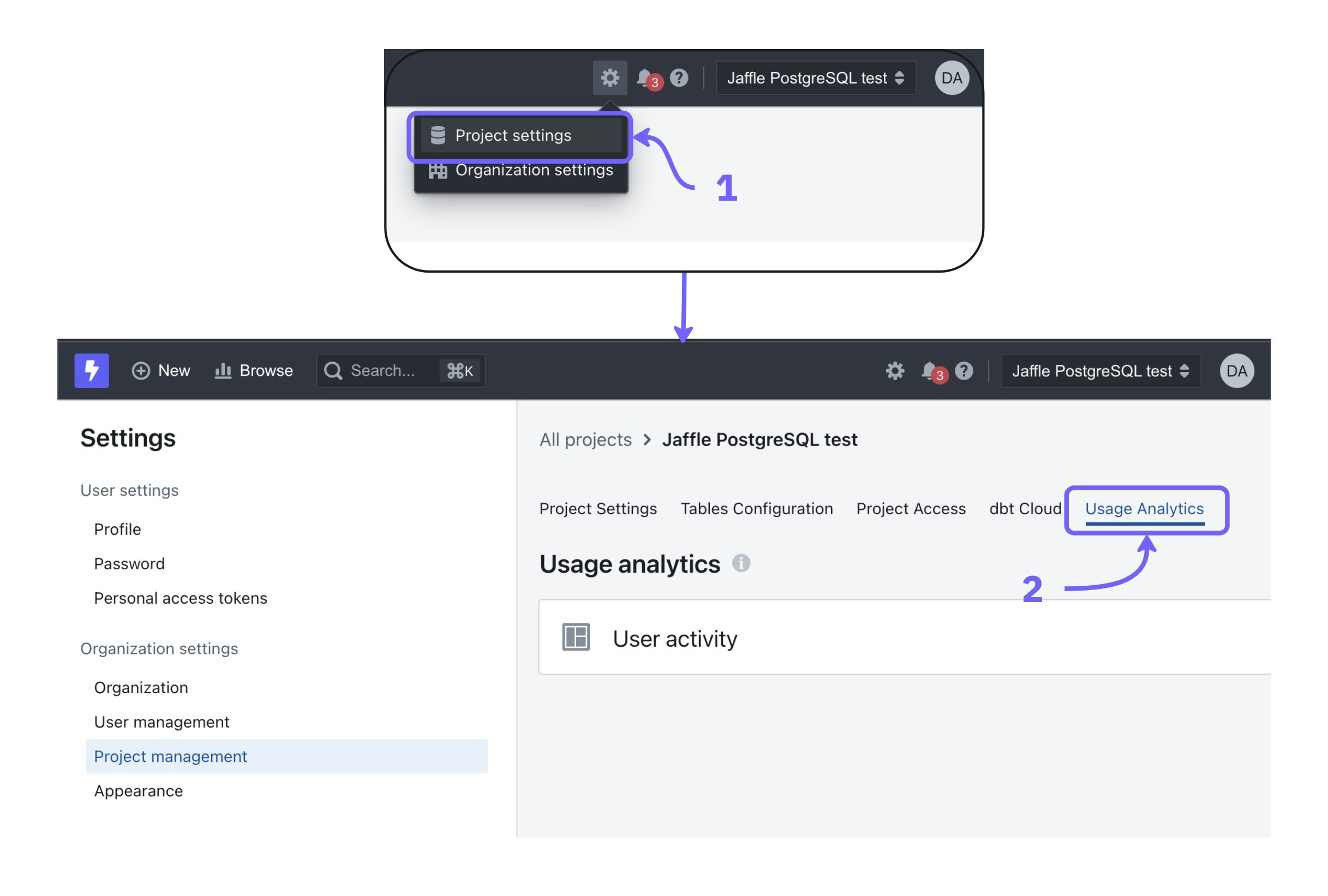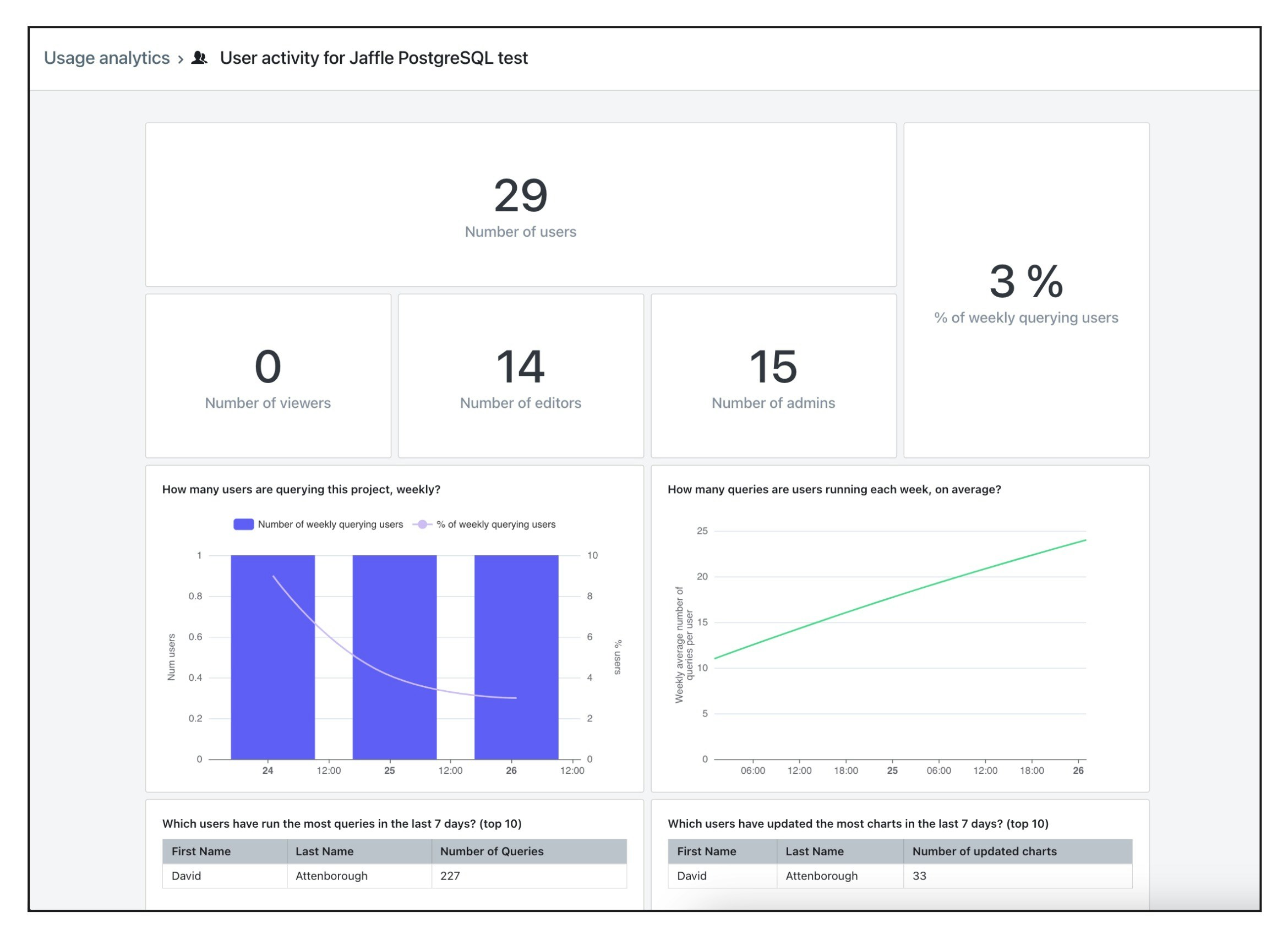- Usage Analytics dashboards - these are dashboards created by Lightdash which give you an overview of your project’s content and user activity.
- Query tags - this is metadata which is added to your data warehouse queries and gives you information about who is querying data and what they are querying.
Usage analytics dashboards
Each project has usage analytics dashboards created by Lightdash giving you an overview of your project’s content and user activity. To see your usage analytics dashboards for a project, just click on thesettings icon, project settings, then usage analytics.

User Activity dashboard
This dashboard gives you an overview of the users in your project and the activity of your users.
- Number of users: the total number of users that have access to the project.
- Number of viewers: the number of users with the
viewerrole that have access to the project. - Number of editors: the number of users with the
editorrole that have access to the project. - Number of admins: the number of users with the
adminrole that have access to the project. - % of weekly querying users: the % of users which have run at least one query in the project in the last 7 days (out of all users in your project). Queries include viewing existing charts and dashboards.
- Number of weekly querying users: the number of users which have run at least one query in the project in the last 7 days.
- Weekly average number of queries per user: the rolling 7 day average number of queries that each user is running in your project.
- Users that have run the most queries in the last 7 days: a list of the users that have run the most queries in your project in the last 7 days.
- Users that have updated the most charts in the last 7 days: a list of users that have updated (including created) the most charts in the project in the last 7 days.
- Users that have not run a query in the last 90 days: a list of users that have not run a query in the project in the last 7 days. This includes viewing charts and dashboards.
Query tags
Query tags are metadata which is added to your data warehouse queries and gives you information about each query executed. The following query tags are sent:| Query Tag | Detail |
|---|---|
| organization_uuid | Lightdash organization unique identifier. |
| project_uuid | Lightdash project unique identifier. |
| user_uuid | User unique identifier. |
| dashboard_uuid | Dashboard unique identifier. |
| chart_uuid | Chart unique identifier. |
| explore_name | Name of the explore. |
| query_context | Which context the query was executed in. For queries in: - dashboards use dashboardView - explore use exploreView- chart use chartView- sql chart use sqlChartView |
| Data Warehouse | Query Tag |
|---|---|
| BigQuery | Persists in the labels parameter in your job history. |
| Snowflake | Persists in the comment parameter in your query history. |
| Trino | Appends to the SQL in your query history. |
| Redshift | Appends to the SQL in your query history. |
| Databricks | Appends to the SQL in your query history. |
| Postgres | Appends to the SQL in your query history. |